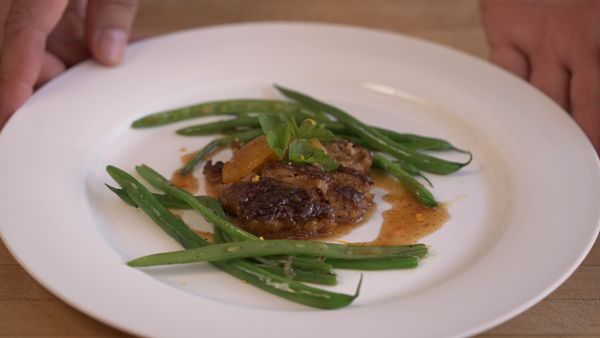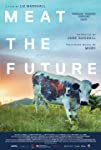Eye For Film >> Movies >> Meat The Future (2020) Film Review
Meat The Future
Reviewed by: Jennie Kermode

It’s an idea which has been around for decades: what if we could enjoy all the flavour and nutritional benefit of meat without having to kill animals? For a long time it wasn’t taken very seriously. The idea of lab-grown meat was off-putting to a lot of people, and there were technical problems: whilst cells could be cultured in paper-thin layers, distributing nutrients through a more substantial cellular structure was extremely difficult. Dr Uma Valeti was one of the people who managed to solve the latter problem, moving into the field from cardiology because he realised that, if he got it right, it would give him the opportunity to save a lot more lives. This documentary examines why, and looks at subsequent efforts to bring the product to market.
It’s often said that the best thing one can do, at a personal level, to tackle global warming, is to become vegan. Whilst one might add qualifiers to that – soy is the latest cash crop for which rainforests are being burned – at its most basic level, it’s pretty well evidenced. As Valeti points out, there are 70 billion farm animals in the world, and together they produce 14.5% of greenhouse gas emissions. By contrast, meat produced without animals creates very little pollution and can be grown in a lot less space, reducing the pressure on wild environments and potentially making way for rewilding. But as with every major change we might make to tackle our current crisis, there are vested interests at stake. Legal battles play out over the right to call it meat, and efforts are made to have it declared unsafe.

As well as following the ins and outs of these legal cases, the relationship between the developers and established businesses which take an ethics-centred approach to farming, and the compromises which inevitably have to be reached, this documentary looks at the practicalities of getting public-facing businesses and members of the public to change their habits. If it is to make a meaningful difference, this cannot be a luxury product. It has to be cheaper than traditional meat products and at least as appealing to the eyes and tongue. A considerable investment is needed to scale up production enough to make this viable – but, of course, if that can be achieved, it has massive market potential. The key lies in getting enough momentum behind it.
With this in mind, it’s understandable if some people see this documentary as just another marketing tool, and it sticks closely to the company line, but it’s far from a vapid piece of advertising: there’s plenty going on here to hold the viewer’s interest. Director Liz Marshall also has the skill to make the meat look delicious, and if you have the least bit of carnivorous inclination, you would be well advised to fill up before you start watching in order to avoid getting distracted by hunger. At the time of filming, beef is the prime focus, but pork, chicken and duck have all been tested and it’s simply a matter of time until they can be brought to scale.
Moving between the lab, the boardroom, a planned production space and assorted interview locations, Marshall does her best to keep it visually interesting and succeeds rather better than you might expect. Valeti is a major asset, his intelligence clear, his enthusiasm shining through, and it’s largely thanks to this that the film is able to communicate just what a game changer these products could be. It’s the sort of documentary which may well increase in value with the passing of time if the food revolution happens as Valeti predicts, giving viewers the chance to explore a key phase in its history. At present a lot remains to be seen, but this is a good place for newcomers to the subject to begin.
Reviewed on: 04 Apr 2022
















